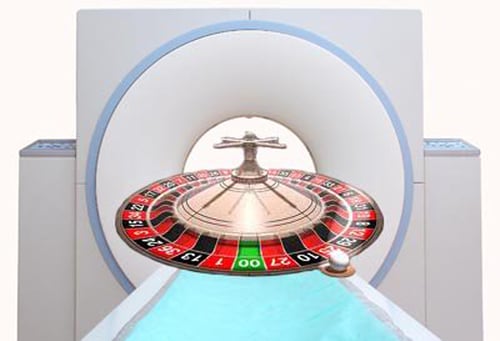Maybe it’s time for a new MRI for your department, imaging center or practice. Or you think it might be a good idea to look into buying a pre-owned MRI. Well, before you start saying things like “1.5T” or “high field open” or even “how much,” there are five important things to consider and they all lead to one single fact: if you don’t have referral patterns that support this kind of pricey purchase, you may as well head to Las Vegas and blow that money at the casino.
 How you answer these five important questions can save you time, money and even more money.
How you answer these five important questions can save you time, money and even more money.
1) Why do you want to make this purchase in the first place? Don’t say that you always wanted to buy an MRI or you think that if you had a 3T your business would grow. Those reasons just aren’t good enough to warrant investing time and money into new or expanded MRI projects. You need to develop a strategic plan based on financial and market-based analysis. If you need guidance, of course Atlantis Worldwide can help with the process.
2) Do you have a business plan for this acquisition or project? If you don’t, it’s time to develop one. While you might have an MRI that’s working at capacity, that’s not a good enough reason to go out and buy a new or replacement unit. If you haven’t gathered facts, crunched numbers, made projections and written a plan, STOP and do it. And be sure to consider “worst case scenarios” in the equation. After all, even with a replacement MRI, your imaging project will involve a lease or purchase for five years, real estate purchase or rental for 10 years, RF shield and chiller, facility or room construction and possibly ancillary support equipment and services. As important as you think your best case financials may look, if you fail to think in terms of “What if…?” you will be doing yourself a disservice. Your ability to consider the up as well as the downside of any project will help you develop the real volume and related budget discussions. The last thing you should do is start the process with the question “how much is the MRI?” There’s a much bigger picture in play here and your investors or senior leadership will want to see it.
3) How do you plan to capture your share of the business? Again, you need a strategic plan to market your new MRI, which means you have to identify the following:
- Who are your current referring physicians?
- What are their referral patterns like?
- What is the competition doing? Where do their referrals come from? What are their strengths and limitations?
- What would make your facility different or better? Location? Patient access?
- You should create a go-to-market strategic program before you buy a new or replacement MRI. This will impress your investors or leadership, and also help your lenders appreciate your vision.
4) What is your payer mix and how effective is your billing? You need to thoroughly analyze and understand your payer mix and reimbursement patterns for studies you currently do and plan to do—which includes Medicare, Medicaid, Private Pay, HMO and a host of others payers or groups. If you calculate revenue stream based on reality rather than wishes, it will help you determine whether the purchase of new or refurbished equipment is justified. Once you’ve done that, it’s time for the hard part. Take your estimates down a notch and again, look at worst-case scenarios. After all, you will be providing services for five years in the future— and what is true today will not be true in 2018. As for billing, if you fail to collect what you forecast, it taxes your proforma estimates and best-case goals for your project. Make sure your plan includes strategies to stay ahead of billing issues and consider both accuracy in billing as well as turn around time. If your billing entity isn’t working, you’ll know it soon enough.
5) What is your overall budget? Last but not least, you need to thoroughly understand all of the costs, including the unexpected MRI system and siting costs. In most cases, if you fail to recognize that construction, even though you might buy a pre-owned 1.5t or 3T MRI at a great price (compared with a new system) the cost for your MRI facility or renovation will cost exactly the same as if you purchased a new MRI. You’ll also want to include a budget for your second year service bump after warranty, unexpected upgrades during five years, and other costs such as operational, billing, marketing and radiology fees. But that’s not all. If you dig even deeper and consider unexpected declines in your imaging revenue due to local changes in employment or insurance coverage, a new competitor in your market, seasonal population changes or drops in reimbursement and you will realize that a new MRI requires more than just a vision or a great idea. Once you realize that it comes down to the numbers, the real numbers, then you will be able to establish a realistic budget while you create a market strategy for the “worst case scenario.”
It’s true these questions could frighten some of you away from a new MRI—but if it saves you from a costly mistake, that’s a good thing. However, if you answer these questions with hard facts and research, Atlantis Worldwide can then help you through this strategic and financial planning process while you review your options and plan for a successful MRI purchase and business expansion.
For more information or free consultation
Here are a few blogs that you may also be interested in
- Marketing Your New Pre-Owned Medical Equipment
- Relocationg Medical Imaging Equipment: 5 Easy Steps
- Secrets to Selling or Trading-in your Medical Imaging Systems
- Benefits of Buying Pre-Owned Medical Equipment from a Stocking Dealer
- Free MRI Resources
Meet the Author: Norm Tessell, FACHE





